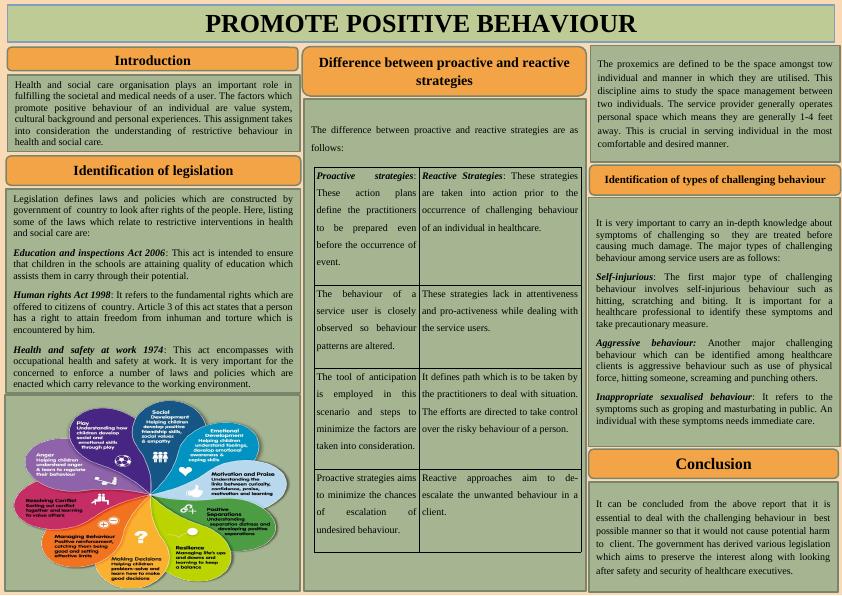Promote Positive Behaviour in Health and Social Care
1 Pages637 Words21 Views
Added on 2023-03-21
About This Document
This assignment discusses the factors that promote positive behaviour in health and social care, the legislation related to restrictive interventions, and the difference between proactive and reactive strategies. It also explores the types of challenging behaviour and the importance of dealing with them effectively.
Promote Positive Behaviour in Health and Social Care
Added on 2023-03-21
ShareRelated Documents
End of preview
Want to access all the pages? Upload your documents or become a member.
Legislation in relation to restrictive interventions
|1
|630
|51
Promote Positive Behaviour
|10
|561
|58
Assignment on Proactive Strategies
|1
|1272
|198
Legislation in relation to restrictive intervention in health, social care
|7
|667
|35
Promoting Positive Behaviour : Assignment
|8
|1853
|43
Project on Laws in Working Environment
|8
|1960
|81

